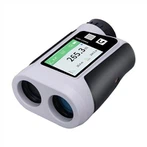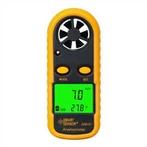A brief description of the laser range finder
Laser rangefinders are widely used in topographic surveys, battlefield surveys, tanks, aircraft, ships and artillery laser rangefinders to measure the distance of targets, and to measure the height of clouds, aircraft, missiles and artificial satellites. It is an important technical equipment to improve the accuracy of high tanks, aircraft, ships and artillery. Due to the continuous reduction in the price of laser range finders, laser range finders have gradually begun to be used in industry, which can be widely used in industrial measurement and control, mines, ports and other fields
Laser safety warnings and precautions for use Lasers are high-intensity light source radiation devices. High-power lasers can be used to cut and weld metal materials, so lasers have serious damage to the human body, especially human eyes, and special care must be taken when using them.
Internationally, there is a unified classification and unified safety warning signs for lasers. Lasers are divided into four categories (Class1~Class4). Class I lasers are safe for humans, Class II lasers cause minor harm to humans, and Class III and above lasers are safe for humans. Lasers can cause serious harm to people, so special attention should be paid when using them to avoid direct exposure to human eyes.
In the early 1990s, several major companies in Europe and the United States successively produced commercially available semiconductor laser diodes, which revolutionized the practical application value of lasers. For other types of lasers, due to the complex mechanism of laser generation, the volume, weight are particularly large, and the power consumption is high, which greatly limits the application of lasers. The emergence of semiconductor lasers has solved these problems. With the further maturity of semiconductor laser technology, the price gradually decreases, and its application volume and application field continue to expand, and its application prospect is good. Semiconductor lasers are small in size, light in weight, high in reliability, high in conversion efficiency, low in power consumption, simple in driving power, capable of direct modulation, simple in structure, low in price, safe in use, and have a wide range of applications. Such as optical storage, laser printing, laser phototypesetting, laser ranging, barcode scanning, industrial detection, test and measurement instruments, laser display, medical equipment, military, security, field detection, construction leveling and marking instruments, laboratories and teaching Demonstration, stage lighting and laser show, laser level and various marking positioning, etc. Some unique advantages of semiconductor lasers make them very suitable for military applications, such as field ranging, aiming of guns, shooting simulation systems, blinding, guidance for submarine communications, fuzes, security, etc. Since it can be driven by ordinary batteries, some portable weapon equipment configurations are possible.
The wavelength bands of semiconductor lasers that have been developed and put on the market are 370nm, 390nm, 405nm, 430nm, 480nm, 635nm, 650nm, 670nm, 780nm, 808nm, 850nm, 980nm, 1310nm, 1550nm, etc., of which 1310nm and 1550nm are mainly used for optical fiber communication field. 405nm - 670nm is the visible light band, 780nm - 1550nm is the infrared light band, and 390nm - 370nm is the ultraviolet light band. High-tech products and professional technology lead the trend of the distance measurement industry.






